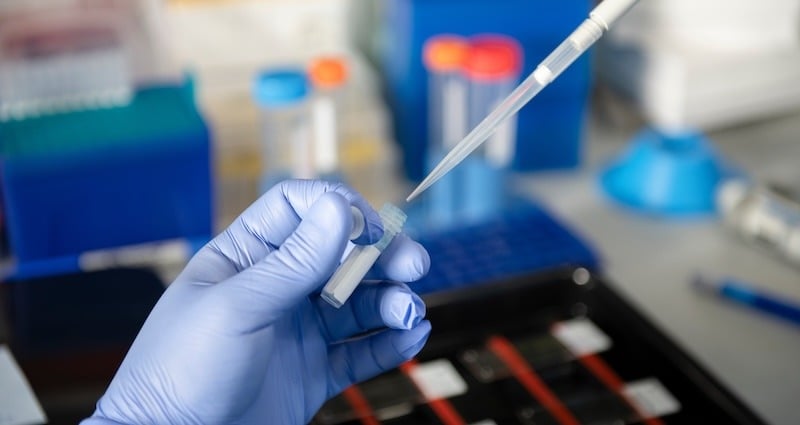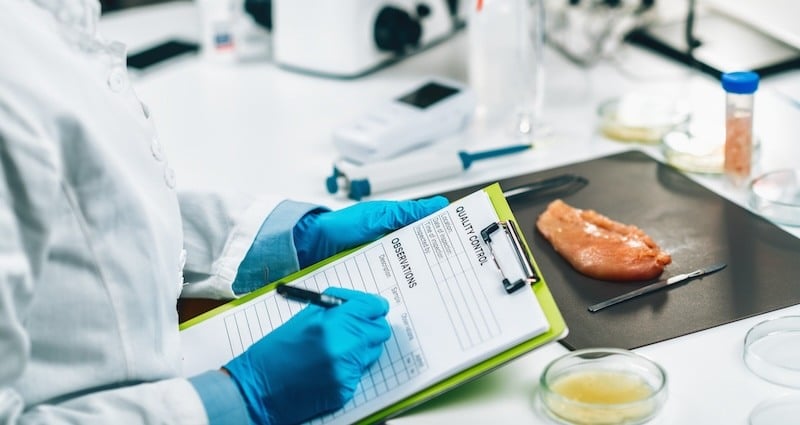
In industries like healthcare and food service, where clean surface areas are essential, the ability to perform on-the-spot quality control checks to verify sanitation procedures and detect microorganisms is crucial. For context, the Centers for Disease Control (CDC) reports that 1 in every 31 patients acquires a healthcare associated infection during a hospital stay. Similarly, according to the CDC, nearly 48 million people in the U.S. get sick from foodborne illnesses each year.
Yes, with strict environmental sample collection and processing protocols, the incidence of infection and illness can be significantly reduced.
This guide clearly illustrates the importance of environmental sample collection and processing and provides detailed procedures for various spaces.
Why is Having Environmental Sample Collection and Processing Important?
Environmental sample collection and processing are vital for maintaining high standards of cleanliness and safety in any workspace. This process helps to:
-
Ensure safety: Regular environmental sampling helps to detect harmful microorganisms, ensuring the safety of employees and customers.
-
Verify sanitation procedures: It validates your cleaning protocols, assuring they are effective, and identifies areas that may need more rigorous cleaning.
-
Control contamination: Regular monitoring prevents potential contamination that could lead to severe health risks and operational shutdowns.
“The importance of environmental monitoring cannot be overstated,” said Virginia Templet, Puritan Medical Products. “For decades, we have seen the havoc that lack of testing procedures can have on public health and businesses – by having these processes in place, you ensure your reputation is better protected. And the good news is that we’re here to help with that!”
For more information on the importance of environmental monitoring in food processing, check out our detailed blog post.
4 Major Risks of Not Conducting Environmental Sample Collection and Processing
Failing to conduct regular environmental sample collection and processing can lead to:
-
Health risks: Undetected pathogens can cause severe illnesses among employees and customers.
-
Product contamination: Contaminated environments can lead to product spoilage and recalls.
-
Legal and financial consequences: Non-compliance with health regulations can result in hefty fines and legal issues.
-
Damage to reputation: Poor sanitation can harm a business’s reputation, leading to a loss of customer trust and revenue.
So, with all of this in mind, let’s consider how environmental samples and collection processes can help us prevent harmful bacteria from spreading in some key workspaces.
Check out our complete guide to environmental swabbing here.
How to Conduct Surface Swab Test Procedures for Various Spaces
Whatever your industry, part of your responsibility as an administrator is to ensure the safety of your employees and your customers. This means making sure the workspaces where you operate are clean and free of bacterial or viral pathogens. Below are step-by-step guides on how to collect environmental samples from different surfaces.
Steel Countertops
Follow these steps to accurately collect an environmental surface sample from your stainless steel countertops:
-
Don latex gloves.
-
Open and remove the Puritan EnviroMax Plus® Collection Kit from its package, and place it on a clean surface until ready for use.
-
Hold the vial at a horizontal angle to prevent contaminants from entering the vial.
-
Remove the Puritan EnviroMax Plus® swab from the vial by holding the cap and twisting counterclockwise.
-
Using one side of the swab, select a small sample area.
-
Collect a sample by vigorously rubbing the swab with firm pressure approximately 10 times in a vertical, up-and-down motion following a “Z” pattern.
-
Turn the swab to the opposite side and swab approximately 10 times in a horizontal, side-to-side motion over the surface area being sampled.
-
Swab diagonally using the same swab side as used in the vertical swabbing.
-
Swab approximately 10 times in the sampling area until the opposite side’s bottom corner has been sampled.
-
Upon completion of sample collection, aseptically return the swab to the corresponding vial, holding the vial vertically to prevent contaminants from entering.
-
Label the vial with appropriate information.
-
If immediate testing cannot be performed, place samples in a refrigerated area.
Ceramic Tile
Follow these steps to accurately collect an environmental surface sample from ceramic tile:
-
Put latex gloves onto your hands.
-
Open and remove the Puritan ESK® Sampling Kit from its package.
-
Remove the Puritan ESK® swab from the vial by holding the cap and twisting counterclockwise.
-
Using one side of the swab, collect a sample in a 50 square cm target area, or according to the established environmental monitoring program.
-
Rub the swab with firm pressure approximately 10 times in a horizontal, side-to-side motion following a “Z” pattern.
-
Turn the swab to the opposite side and swab approximately 10 times in a vertical, up-and-down motion over the surface area being sampled.
-
Swab diagonally using the same swab surface side used in the vertical swabbing.
-
Starting in the top corner of the sample area and using the “Z” pattern, swab approximately 10 times in the sampling area until the opposite side’s bottom corner has been sampled.
-
Sample the grout that outlines the tile and/or the designated sampling area by rubbing the swab with firm pressure along the border of the tile.
-
Aseptically return the swab to the corresponding vial.
-
Tighten the cap until tension is felt.
-
Label the vial with appropriate information.
-
If immediate testing cannot be performed, place the sample in a refrigerator until testing can be performed.
Floor Drain
Follow these steps to accurately collect an environmental surface sample from a floor drain:
-
Remove the floor drain grid.
-
Put latex gloves on your hands.
-
Hold the Puritan EnviroMax Plus® vial at a horizontal angle to prevent contaminants from entering the vial.
-
Remove Puritan’s EnviroMax Plus® swab from the vial, by holding the cap and twisting counterclockwise.
-
Scrub the dry residue from the floor drain walls by applying firm pressure and moving the swab in a clockwise circular motion for a minimum of 10 revolutions.
-
Rotate the swab as you go to ensure proper sample collection on both sides of the swab.
-
Upon completion of sample collection, aseptically return swab into corresponding vial holding the vial at a horizontal angle to prevent contaminants from entering.
-
Care should be taken not to touch the swab and/or the swab shaft, in order to prevent cross-contamination.
-
Label the vial with appropriate information.
-
If immediate testing cannot be performed, place samples in a refrigerated area.
Choose Puritan Products for Your Surface Swab Test Procedure
Keeping your work areas clean and free of microorganisms is essential to the successful operation of your facility. Ensure the safety of your clients and your reputation by using Puritan products, including:
EniviroMax® and EnviroMax Plus® Collection Kit
We combined EnviroMax® (dry) and EnviroMax Plus® (pre-moistened) swabs with collection tubes to create an optimal environmental, equipment, and surface sampling kit. EnviroMax Plus® swabs are pre-moistened with a neutralizing buffer and are never oversaturated.
The oversized swab consists of a rigid paddle inside a foam tip. This design was inspired by a customer in the food production industry who needed to perform sampling on large pieces of equipment with varying surface terrain. The swab tip is medical-grade polyurethane foam, which increases sample and elution counts. Tips are pointed or hard-to-reach areas, such as drains, yet work well for floors, walls, and countertops. For more information, check out our blog post on EnviroMax and EnviroMax Plus®.
To assist you in validating your cleaning and sterilization process, we’ve put together this blog that overviews these two products in more detail.
Puritan ESK® Sampling Kit
Additionally, Puritan’s ESK® Sampling Kit is the perfect tool for this type of environmental sampling, and can be used in a variety of applications. In this short informational video, we show you how to collect an environmental surface sample from a ceramic tile. A step-by-step transcript is below.
If you have any further questions about our EnviroMax® line or ESK® Sampling Kit or polyester tipped swabs, or if you'd like more information about our line of environmental sampling products, please feel free to contact our experienced product specialists today.






